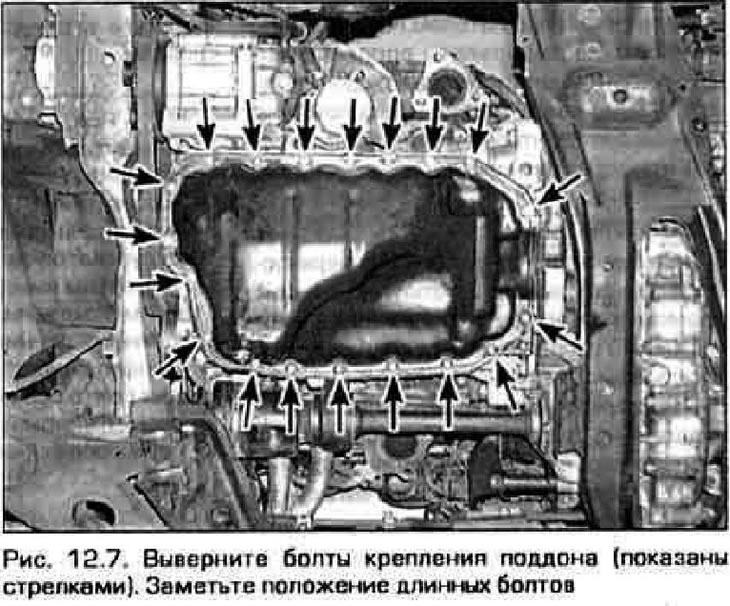Removing
1. Disconnect the negative cable from the battery.
Warning. If your vehicle has an anti-theft audio system, make sure you have the unlock code before disconnecting the battery.
2. Raise the vehicle and place it on secure stands.
3. Remove the mudguard from under the engine.
4. Drain the engine oil and remove the oil filter.
5. Disconnect the exhaust pipe from the front and rear exhaust manifolds (see paragraph 9), as well as from the catalytic converter (see chapter 4). Lower the intake pipe.
6. Remove the suspension cross member.
7. Turn out bolts of fastening of the oil pallet and remove it from the engine (fig 12.7). If the sump is stuck on the gasket, gently pry it away from the crankcase with a small screwdriver or putty knife. Be careful not to scratch the mating surfaces, otherwise the gasket will leak.

Note. Remember the position of the long bolts in order to screw them into their original places in the future.
Installation
8. Scrape off any remaining sealant from the sump and crankcase mating surfaces and clean with nitro thinner or acetone. Also remove any remaining sealant from the threaded holes in the crankcase.
9. Check the installation surface of the pallet for flatness, especially around the holes. If required, place the flange on a block of wood and straighten it out with a hammer.
10. Apply a bead of 3-4mm wide RTV sealant to the sump flange (pic. 12.10).

Note. The pallet must be installed in place no later than 5 minutes after applying the sealant, otherwise it will dry out.
11. Install the pallet in place and secure it with bolts. Tighten the bolts gradually to the required torque (see technical data) in sequence from the middle to the edges of the pallet.
Note. The tightening torque for short and long bolts is different.
12. Establish other details in sequence, return to their removal.
13. Start the engine and check for oil leaks.
